Wisdom teeth are trouble. Wisdom teeth are also called third molars and it is not unusual for these teeth to become "stuck", wedged in or what we call impacted. They are the last teeth to come through into the mouth and often there is not enough room for them. Most people have four wisdom teeth but up to 10% of the population missing one or more. When wisdom teeth become impacted they cause a number of problems.
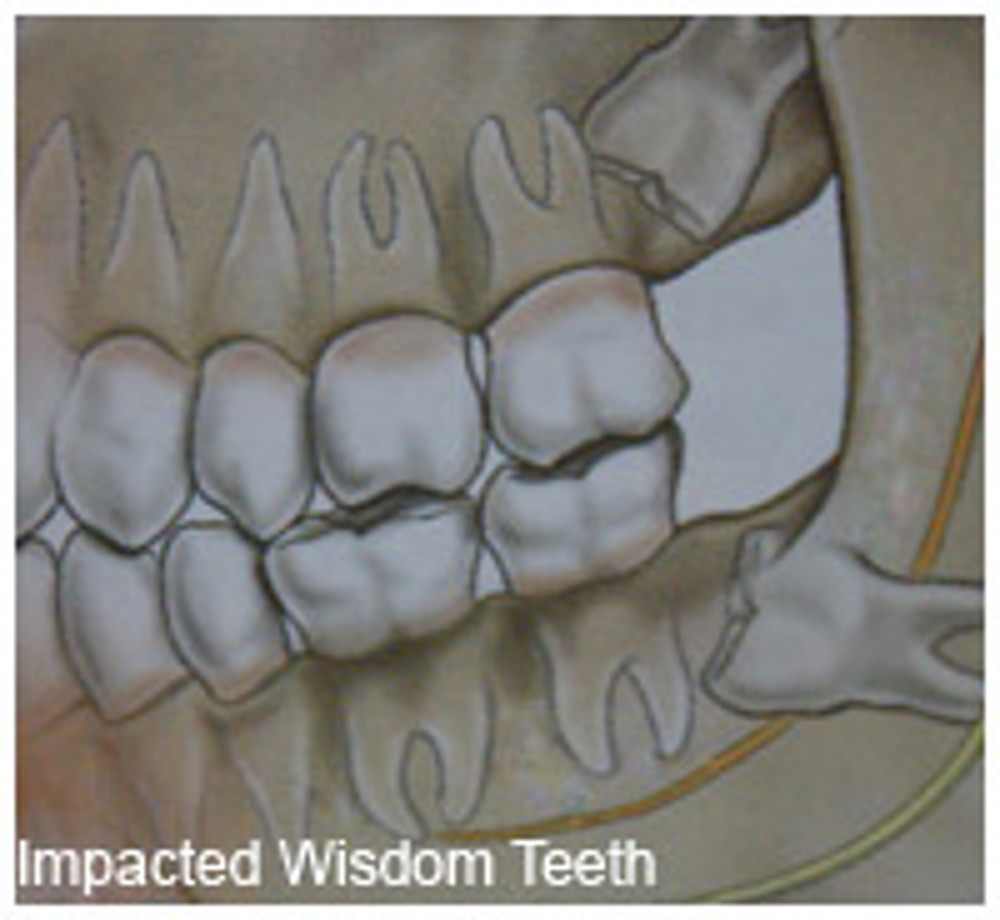
Problems caused by impacted wisdom teeth
Infection:
When a wisdom tooth becomes stuck in the jaw bone there is often a partial flap of the gum overlying the tooth and infection may develop around this area. The area becomes swollen, red and very painful. Swallowing may be painful and sometimes people can feel generally unwell. Sometimes, there can be a discharge of pus and this may have a foul taste associated with it. Often if the infection around the wisdom teeth is severe antibiotic therapy may be required.
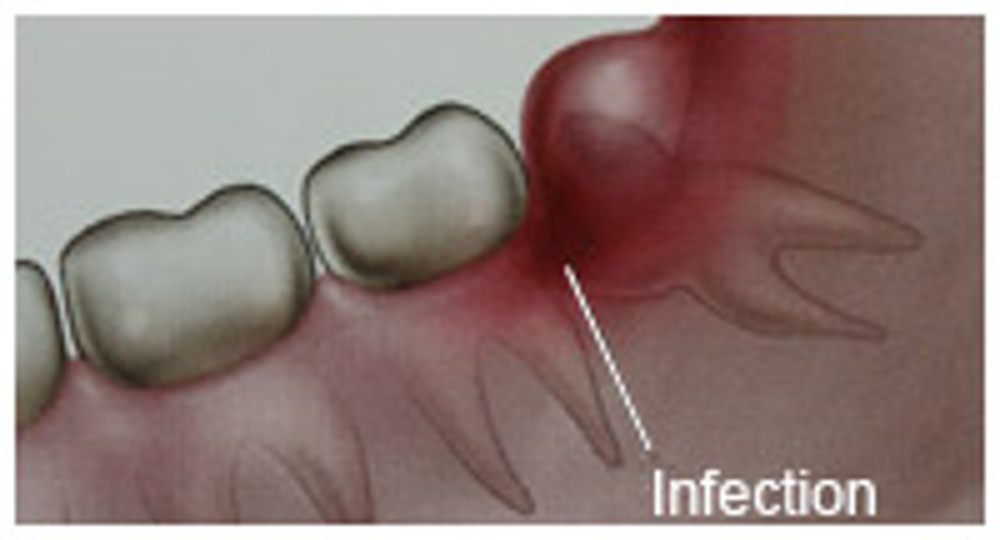
Crowding:
Pressure from impacted wisdom teeth is one of the causes of crowding of the front teeth. It is not the only cause of crowding as some people with no wisdom teeth still get crowding but it is believed to be a significant contributing factor. This is particularly disappointing if you have undergone orthodontic therapy to achieve straight teeth.
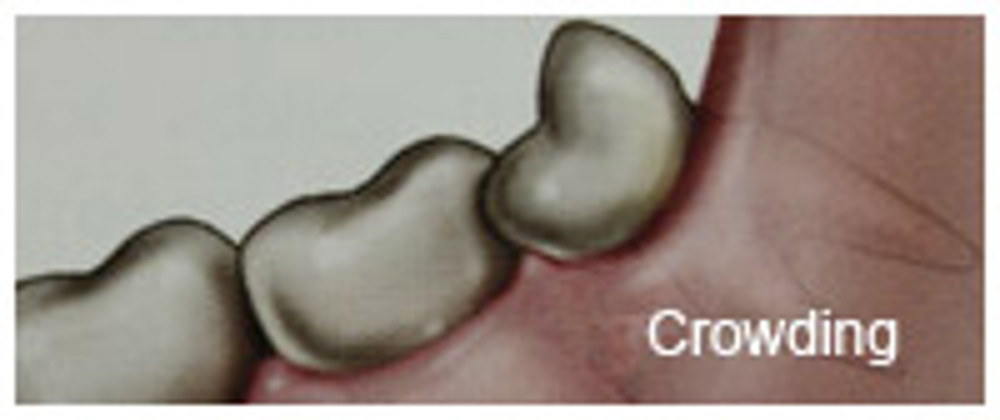
Damage to adjacent teeth:
Pressure from impacted wisdom teeth can also cause damage to the adjacent teeth. Food impaction between the adjacent tooth and the wisdom tooth can cause cavities in both teeth and cause bone loss on the back of the good tooth.
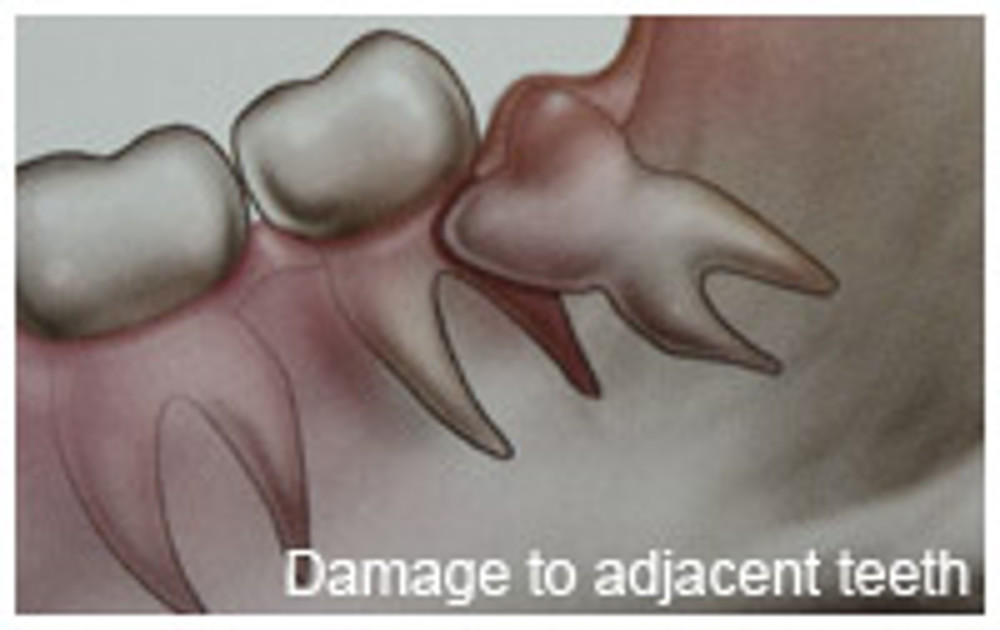
Cysts:
A fluid filled sack called a cyst can on rare occasions form around the crown of an impacted wisdom tooth.
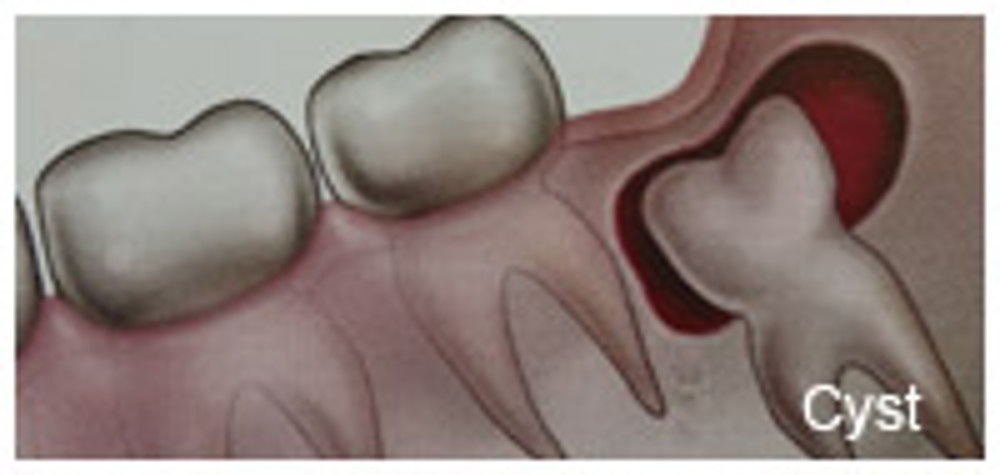
Decay:
When the wisdom teeth become stuck they are often impossible to clean properly and they can become decayed. Also, they can cause decay in the tooth in front and it can be very difficult to place fillings in these situations prior to the removal of the wisdom teeth.
Line of weakness in the jaw bone:
An impacted wisdom tooth causes a weakness in the jaw bone which could result in a broken jaw if the jaw bone is struck such as during boxing or other contact sports.
Early or timely removal of impacted wisdom teeth can prevent these problems
These problems can be prevented by the timely removal of impacted wisdom teeth. Generally speaking, it is best to have this done if at all possible when you are young as the surgery is a lot more comfortable for younger patients and recovery times considerably quicker. At Oral Surgery Associates, we recommend the removal of impacted wisdom teeth to be ideally undertaken between the ages of 18 and 25 and before they cause problems.
However, there are occasions when these teeth are removed earlier if they have started to cause trouble, needed to be removed for orthodontic (teeth straightening) work or are causing problems such as cyst formation. It is often best to have the wisdom teeth removed before they cause problems as symptoms such as pain can be quite severe and occur at very inconvenient times. Also the surgery becomes more difficult and complication rates rise as people get older.
Not all wisdom teeth need to be removed,such as those that are erupted into a normal position and not impacted. Another occasion when the wisdom teeth may not need to be removed is if they are deeply buried in the jaw bone and not associated with any pathology. However, this should be carefully assessed with a three-dimensional Galileos scan (see below).
Assessment of your impacted wisdom teeth
At Oral Surgery Associates, we have a special three-dimensional x-ray technique called a Galileos cone beam tomography examination. The special x-ray considerably improves the diagnostic ability for the surgeon in removal of impacted teeth. It clearly shows the position of a nerve which supplies feeling to the lower lip and chin and often lies close to the roots of wisdom teeth. By being able to carefully assess the position of this nerve, we at Oral Surgery Associates are able to plan your surgery to minimise the risk of damage to this nerve.